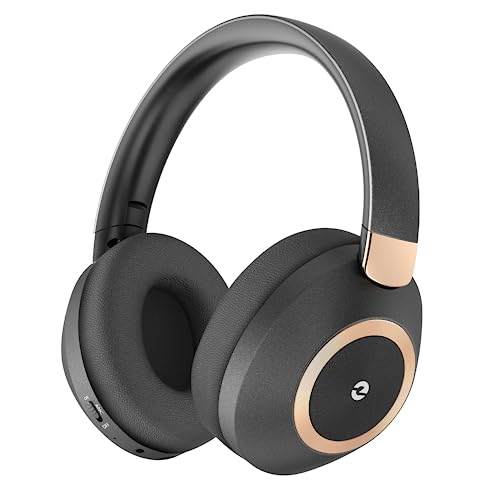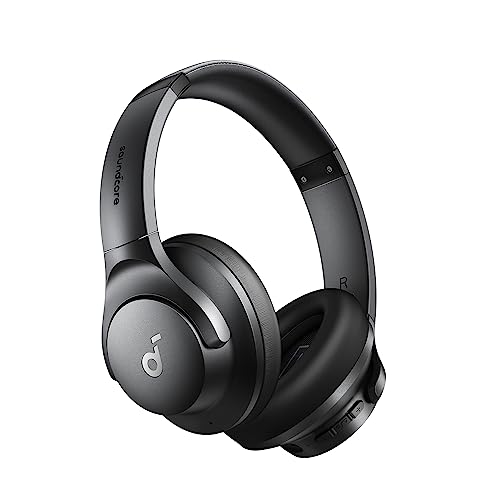Headphones Noise Cancelling – How Do They Work?
Headphones with active noise cancelling utilize electronics inside to listen to ambient sounds and reverse the structure of the sounds, creating anti-noise waves that cancel out those irritating peaks. Continuous noises like the low hum from airplane engines or trains are muffled while irregular sounds that have different bandwidths are muffled.
You can answer a call in a noisy restaurant without worrying about coworkers being able to hear you.
1. Sound Quality
It isn’t a matter of whether they are noise cancelling or not however, the quality of the sound is still vital. Generally, the higher-priced headphones will have superior sound quality than lower-cost ones, but this is not always the case, so it’s worthwhile researching before buying.
The most common type of headphones that reduce ambient noise are those that use active noise cancelling (ANC). This technology uses built in microphones to continuously monitor the environment surrounding you and then creates a reverse of the outside sound. The sound is transmitted through your speakers with your music and cancels out any background noise, so you only hear the music.
ANC can suppress low-frequency sounds like the rumble of trains or plane engines. However, it will not eliminate all background noise. This is because high-frequency tones have shorter durations than low-frequency sounds and so can’t be cancelled as easily. However, a quality pair of ANC headphones can dramatically reduce distracting ambient noise and leave you in an ethereal state that’s perfect for listening to music or podcasts.
Some headphones also include the option of transparency that lets in some of the world outside to let you be aware of what’s happening around you and have conversations without having to remove the headphones. Some models even have multi-device pairing so that you can switch between listening to music on your phone and taking calls using your computer or tablet.
If you want a headphone which is more passively isolated, take a look at our range of headphones that block out noise. They block out a majority of the surrounding sounds by securing them to your ears. They do not require batteries to operate.
Some of our headphones in-ear have smart technology that learns about the places you visit good over ear noise cancelling headphones time, and then changes to a particular noise-cancelling profile to safeguard your hearing. They are popular with commuters in planes and trains, and can be employed at home to cut down on the noise of the lawnmowers of your neighbors. You can even set distinct noise-cancelling settings for different environments with the Sony Headphones Connect app.
2. Noise Reduction
Noise cancelling headphones help you focus on your music and phone calls by reducing the volume of ambient noise. They incorporate microphones to listen to the sounds of your surroundings, and then generate the opposite of those sounds which are played back into you ears, reducing the volume. You’ll be left with your own private island apart from the music you choose to listen to using your headphones.
The ability of a headphone to cut down on external noise is often portrayed in terms of decibels, however the number alone does not tell the full story. The amount of ANC the headphones claim to offer depends on the quality of the headphones. Even two models claiming the same level of ANC may perform differently.
The electronics in high-quality headphones that use active noise cancellation are able to drain batteries quickly. This is why an extra battery is always an excellent idea for any headphone that utilizes this technology.
The quality of ANC in headphones is illustrated by their ability to block out low-frequency sounds, such as airplane engines, train engines or animated conversations between your seatmate (which are only blocked by passive isolation). There are also more advanced ways to use ANC and these are incorporated into the top earbuds.
 One example is Bose’s active Noise Cancelling, noise cancelling wireless headphones which uses digital audio processing to adjust to your surroundings. Its new Aware mode is a more advanced version of this that will automatically adjust the ANC in accordance with the sounds around you.
One example is Bose’s active Noise Cancelling, noise cancelling wireless headphones which uses digital audio processing to adjust to your surroundings. Its new Aware mode is a more advanced version of this that will automatically adjust the ANC in accordance with the sounds around you.
The best earbuds for commuting or traveling are those that block out noise from the surrounding, but still let you hear important sounds like your phone, your alarm clock, and notifications. They also have the top ANC so that you can concentrate on your work and relax in noisy surroundings with calming music without stressing your ears. You can also utilize the EQ settings of your headphones to adjust how much of the outside world you want to let through.
3. Comfort
The comfort capabilities of headphones noise cancelling depend on the design, but the most comfortable ones create a sonic buffer between your ears and the sounds outside. When you’re at a busy airport or on your way to work they block out any background noises and let you listen to your music in peace. This is much better than turning up the volume of your normal headphones, which can cause damage to your ears.
 There are two types of headphones that reduce noise that are active and passive. Passive noise isolation makes use of the physical design of the headphones to block background noise before they reach your ears. This requires earpads that fit comfortably over your ear canal openings and the headband doesn’t move when you move. The average headphone that is passive is designed to last up to 30 hours.
There are two types of headphones that reduce noise that are active and passive. Passive noise isolation makes use of the physical design of the headphones to block background noise before they reach your ears. This requires earpads that fit comfortably over your ear canal openings and the headband doesn’t move when you move. The average headphone that is passive is designed to last up to 30 hours.
Active noise cancellation headphones, or ANC headphones, make use of electronics to monitor ambient sound and produce noise cancellation. They do this by creating a sound wave of equal intensity that’s 180 degrees out of phase with the sound you’re hearing. These waves cancel each other out, resulting in an utterly peaceful, quiet zone apart from the music you’re listening to. The technology behind ANC isn’t flawless however, and often encounters high-pitched sounds, such as the hum of an airplane engine and sounds that fluctuate in frequency, such as the whooshing of car tires on the highway.
It’s best to contact the railway or airline before using headphones with ANC. Certain models have specific requirements for headphones that can be used onboard and train, such as ensuring that they don’t disrupt other passengers and allow all access to the entertainment systems.
If you’re going to the gym, you need headphones that are noise-free that can keep up with your workout. They can also aid in getting you pumped. Bluetooth headphones that have wireless connectivity are the best. They should also have features such as the ability to make calls or listen to podcasts, as well as play music. Some have voice assistants that can respond to questions about your workout schedule or weather, while some come with a quick attention mode that allows you to place your hands over the ear cup to pause your music and add ambient noise to make quick calls.
4. noise cancelling wireless headphones Cancellation
The most effective noise cancelling headphones will eliminate ambient sounds, such as an airplane engine or a car tire that is roaring on the highway. They can also block out chatter from your seatmate on a train. Noise-canceling headsets function by using microphones that listen to and analyze sound waves from outside. The headphones then transmit an audio signal to your ear that is in opposition to unwanted noise. This cancels out both sounds, allowing you to enjoy your music or podcasts.
This process is known as active noise cancellation (ANC) and operates by using tiny microphones that are built into the earcups of your headphones or earbuds. The information is then sent to an electronic processor inside the headphones which converts sound waves into an anti-soundwave. This happens when emitting two identical signals – one that’s at a high point and the other that’s at a low point. The peaks and valleys cancel each other and you’re only hearing the music or other audio.
Some headphones have digital ANC while others mix active and passive noise reduction to give the best results. The better the headphones are, the more effective the ANC will be.
Noise cancelling headphones can reduce ambient noises however they aren’t perfect. They’re especially effective against continuous sounds like trains, jet engines and traffic. However, they might not be able to block out high-frequency noises from your coworkers in the breakroom or from your seatmate laughing on the plane.
It is also important to be aware of the volume at which you listen to music as well as other audio. Both the U.S. Environmental Protection Agency (EPA) and the World Health Organization (WHO) recommend that you keep your music or audio at 70 decibels or less, to avoid hearing loss. The majority of manufacturers are now making headphones that are suitable for all types of listening. Look for a pair with features like noise cancellation, audio quality and other features. You’ll also want to check out how the headphones fit your ears and neck as well as it affects the comfort they provide and how effectively they block your ear from other sounds.
